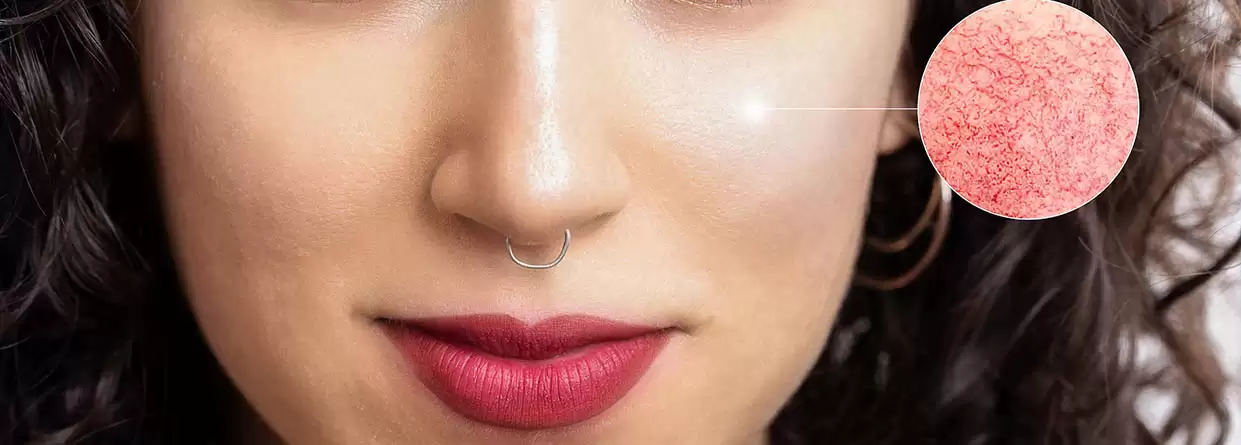
 24X7 Emergency Helpline: 07340054470
24X7 Emergency Helpline: 07340054470
Dermatology | Posted on 03/12/2020 by RBH
Dermatology is a special branch of medicine that involves the diagnosis and treatment of diseases and problems related to the skin, hair and nails. This ranges from complicated cancers to normal cosmetic and ageing conditions of the skin, hair, fat, and nails, as well as oral and genital membranes.
Skin is the largest organ of the body and also the first line of defence against bacteria and injury. It is a typical reflection of the body’s overall health. As per research, nearly everyone including adults, children and infants, gets affected by a certain type of skin problem and would need to visit a dermatologist. A dermatologist is a medical specialist who diagnoses and treats various conditions of the skin, as well as hair, nails and mucous membrane disorders.
While there are hundreds of skin diseases and problems that can affect humans; some of the most common diseases of dermatology include:
Permanent Conditions: These are specific conditions that last for a very long period and usually begin during childhood. However, they can impact a person at any age and are not always present but can flare up at any time. Some of these include:
Seborrheic Dermatitis: This condition is recognized by greasy and scaly patches of skin that form on the skin of babies. They are most commonly found on the scalp and are generally harmless and go away on their own. However, in adults, the condition can affect any area of the skin and is recognized by red, swollen, greasy patches that can have a yellowish crust on the top. In adults, this condition would need treatment from a dermatologist.
Moles: A skin growth which appears because of the accumulation of skin cells within the surrounding tissues. Moles are very common and harmless until they suddenly change their size, appear abnormal or change their colour. Abnormal moles can cause a condition known as melanoma which could be life-threatening such as skin cancer.
Rosacea: Often categorized by abnormal and uncontrolled redness typically on the face. It has four categories including:
Rosacea cannot be completely treated; however, symptoms can be controlled and managed.
Lupus: Lupus is a disorder that attacks the immune system of a person and causes severe inflammation and pain. The symptoms vary from person to person but generally include red patches or ring formations on the skin, rashes on the nose and cheeks, and circular rash formations that do not cause any itching.
Psoriasis: A type of immune problem where abnormal skin patches develop on the body that appears red, and scaly and tend to cause a lot of itching. There are also several kinds of psoriasis.
Eczema: A common skin problem categorized by small patches of itchy rashes on the face, scalp elbows, neck, wrists, ankles or legs. These rashes tend to become bumpy and become thick, as well as change colours.
Vitiligo: A skin problem that occurs because of loss of pigmentation which causes patches of white skin. Patients affected with vitiligo often lose their hair colour; in some cases, the problem tends to spread while in others it is constrained to one part.
Acne: The most common dermatology problem is acne which refers to raised bumps caused by various reasons. Acne can be four major types – pustules (ones with pus), papules (typically raised bumps), Nodules (painful under-skin lumps) and cysts (large, pus-filled breakouts)
Hives: A condition that causes raised itchy welts due to allergy, stress, illness, or tight-fitted clothes.
Warts: Caused because of human papillomavirus (HPV), warts appear as raised bumps and are highly contagious.
Fungal Nail Infection: A condition where fungus tends to develop in and around the nail causing the edges to crumble and leaving a white-yellowish scaling surface.
Cold Sore: A painful blister full of fluid that causes burning and itchy sensations. This is caused because of the herpes virus and lasts up to two weeks.
Carbuncle: Caused due to Staphylococcus aureus bacteria which tends to impact the hair follicles and create a red, itchy, pus-filled bump under the skin.
Cellulitis: An infection bacterial that starts from the deep layers of the skin and quickly spreads throughout the body causing tenderness, redness, swelling and pain.
Hemangiomas: Large bumpy growths which initially appear as tiny, red scratches or bumps on the face, neck or face of children. Usually, they go away on their own but in some cases, treatment may be required.
Measles: An airborne, contagious disease that causes a brownish rash, fever, watery eyes and tiny, red spots in the mouth.
Impetigo: Contagious disease that causes sores and blisters which are very itchy and tend to form around the mouth and face. Impetigo is highly contagious and leaves a crust when it bursts, imprinting a red mark.
Shingles: The re-attack of the same infection that causes chickenpox; it causes pain in the body followed by red blisters all over the skin.
Age Spots: Also known as liver spots, these are flat spots that appear on the surface of the skin and contain more pigment that the nearby areas.
These are some of the common diseases of dermatology that can be diagnosed and treated by a dermatologist. Book Appointment now!